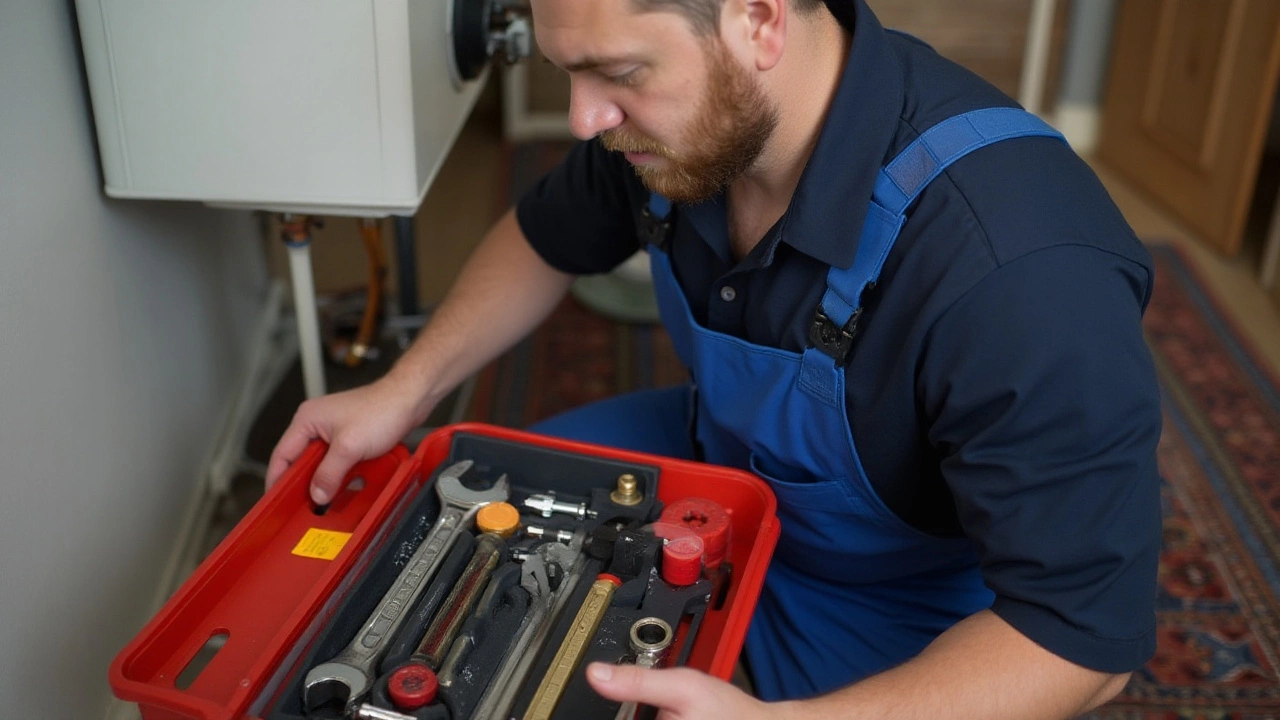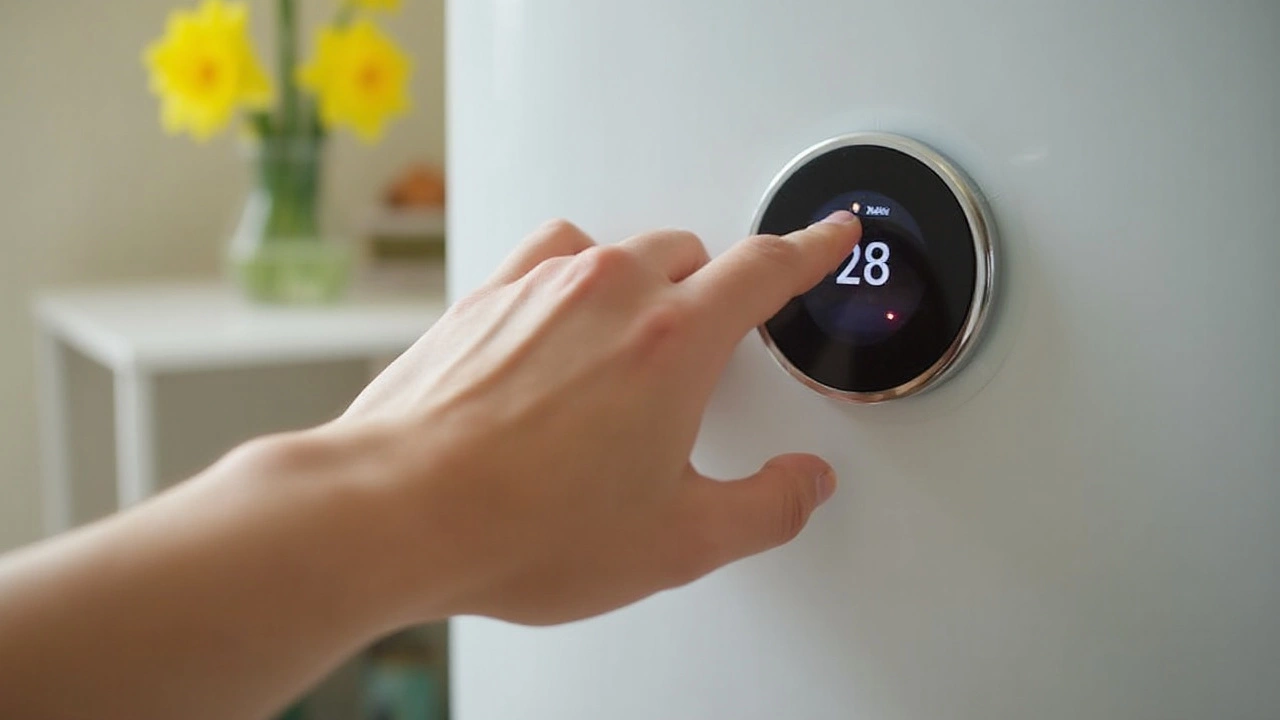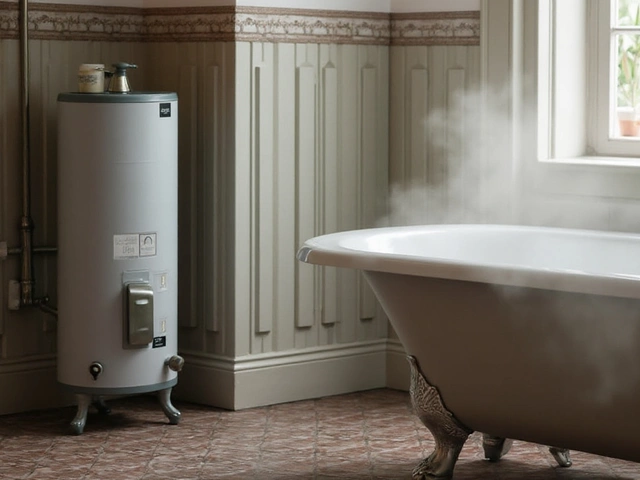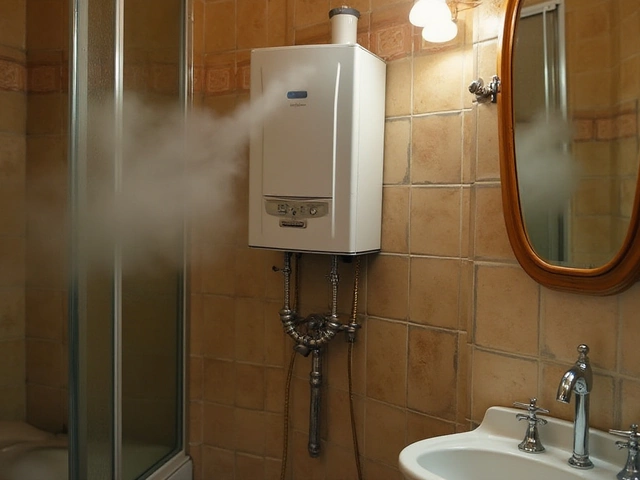When it comes to home comfort, a well-running water heater plays a central role. Whether it's those steamy morning showers or the crucial hot water needed for cleaning, knowing how to check if your water heater is functioning properly is a handy skill. A malfunctioning unit doesn’t just disrupt your routine, but can also be a potential safety hazard if ignored.
In this guide, we walk through the basic steps anyone can take to ensure their water heater is working as it should. From identifying visible signs of trouble to maintaining the unit, our advice aims to help you avoid unnecessary discomfort and costly repairs. Remember, a little know-how about your household appliances goes a long way!
- Signs of a Malfunctioning Heater
- Basic Maintenance Tips
- Troubleshooting Common Problems
- Safety Measures and Professional Help
Signs of a Malfunctioning Heater
Spotting the early signs of a faulty water heater can save you a lot of frustration and money down the line. The first symptom homeowners often notice is an odd noise coming from the unit itself. If your heater is producing popping, creaking, or rumbling sounds, this could indicate sediment build-up inside the tank. This sediment can insulate the water from the heating elements which, in turn, causes the heater to work harder and less efficiently.
Another clear sign is inconsistent water temperature. If your showers are icy one moment and scalding the next, there might be an issue with the thermostat settings or it could suggest a failing heating element. It's crucial to ensure that the thermostat is correctly set to reliably maintain the desired warmth. Beware of visible leaks around the base of your heater. Leaks can cause significant water damage to your home, and they often mean that the inner tank has deteriorated, a situation that usually calls for a full replacement.
Moreover, rusty or discolored water coming from your taps might signal corrosion inside the tank or plumbing. Over time, the lining of your heater can be compromised, especially in older models. This isn't just an inconvenience; it's a potential health hazard, leading to contamination concerns. Additionally, pay attention to your energy bills. A sudden spike in cost without a change in usage patterns may point towards an inefficient water heater. The unit may be consuming more power to deliver the same level of heat, usually due to issues like sediment build-up or aging components.
A drop in water pressure can indicate problems too. Often, this results from mineral deposits blocking the pipes or the unit itself. If you notice the flow isn't as powerful as it used to be, it's best not to dismiss this change. Lastly, if you detect unusual smells, particularly akin to rotten eggs, there could be a bacterial build-up inside the tank. This is frequently associated with units that haven't been used for periods, allowing bacteria to thrive. Regularly flushing the system can help prevent such issues and keep the water fresh.
"Malfunctioning heaters often exhibit warning signs that are easily overlooked. The more a homeowner understands these indicators, the better they can maintain their heater," says Alex Johnson, a certified plumbing specialist from Home Tech Solutions.
Consistent checks for these indicators can prolong the life of your heater and maintain optimum functionality, ensuring you have consistent access to hot water when you need it most. Remember—detecting these signs early helps prevent escalation into bigger, more costly issues.

Basic Maintenance Tips
Keeping your water heater in top condition ensures not only an uninterrupted hot water supply but also extends the appliance's lifespan. Routine maintenance might seem like a chore, but the payoff is substantial. Start by regularly inspecting the temperature and pressure relief valve, or T&P valve, which plays a crucial safety role by releasing excess pressure from the tank. If the valve becomes faulty or stuck, it can lead to hazardous pressure buildup. To check it, lift the valve's test lever and let it snap back. You should hear a rush of water into the drain pipe. If nothing happens, the valve might be faulty and needs replacing.
Another vital task is flushing the tank periodically. Sediment buildup at the bottom of the tank is common, particularly in areas with hard water. This can make the heater less efficient and cause it to overwork, leading to potential failure. Start by turning off the unit's power and letting the water cool down. Connect a hose to the drain valve at the bottom and direct the water into a bucket or drainage area. Open the valve, and let the water and sediment run out. Regular flushing can not only maintain the efficiency of a water heater but also help you avoid the hassle of a sudden breakdown.
If your water heater is electric, another important maintenance step is checking the heating elements and thermostats. Electric units often have high and low thermostats, and if one fails, you might experience insufficient hot water. Carefully removing and checking the electrical elements can show if they are covered in mineral deposits or have burnt out. Replacement can be easily done with the right tools and a bit of patience. Don't forget to turn off the electricity at the breaker panel before attempting any checks or replacements to avoid accidents or damage.
It’s wise to regularly inspect the anode rod too. Typically, this rod protects the inner lining of your water heater by attracting corrosive elements that could otherwise damage the tank. Over time, the anode rod becomes corroded itself and needs replacement roughly every three to five years. By checking the rod annually, you can gauge when it's thin or coated with minerals, signaling time for a new one. This task is simple yet crucial to prevent rust from eating away at the tank lining.
Pay attention to your thermostat settings as well. The Department of Energy suggests setting the thermostat to 120°F. This temperature provides sufficient hot water for most household uses while preventing scalding and saving energy. If your energy bills seem high, lowering the thermostat even slightly can result in noticeable savings. Keeping a maintenance schedule on hand is a great way to stay on track. Regular checkups can help reduce the chance of unexpected problems and ensure your repair work is minimal.
"Regular maintenance can help your water heater last longer and work more efficiently," notes The Family Handyman, a trusted home maintenance resource. Taking these small steps regularly can make a world of difference when it comes to the longevity and reliability of your water heater.

Troubleshooting Common Problems
In an ideal world, your water heater would function flawlessly, delivering hot water at the twist of a tap. But when issues do arise, it's crucial to know how to tackle them effectively. One of the first steps in troubleshooting is identifying the type of water heater you have, whether it's electric or gas. This distinction will guide you in diagnosing issues, as each type has its quirks. A common problem in electric heaters is the loss of power, often indicated by the absence of any hot water. This could be due to a tripped circuit breaker, which is easily fixable by resetting it. However, if the issue persists, a faulty heating element might be to blame, requiring replacement by someone with the know-how.
For gas heaters, the situation might seem a bit more complex with the involvement of pilot lights and gas valves. If there's no hot water coming out, your first step should be to check the pilot light. If it's out, follow the manufacturer's instructions to relight it. But remember, repeated extinguishing of the pilot light often points to a deeper issue, such as a thermocouple needing replacement. These kinds of fixes are not only essential for regaining function but also for maintaining safety in your home, as leaking gas can have serious consequences. Sometimes, sediment build-up at the bottom of the tank can be the unseen culprit behind inefficient heating. Draining the tank periodically can resolve this.
Another common woe is insufficient hot water supply. This can be attributed to a number of factors, ranging from incorrect thermostat settings to a tank that's too small for your household needs. Ensure your thermostat is set to the optimal range, usually between 120 and 140 degrees Fahrenheit, to prevent scalding while maximizing supply. If the heater is simply too small, consider upgrading to a larger unit or supplementing with a tankless water heater for additional demand. Inconsistent water temperatures may point to a failing thermostat. Before replacing, make sure it just hasn't been set improperly.
"The temperature and pressure relief valve should be tested at least once a year to ensure it is not clogged." - National Fire Protection Association
In the world of troubleshooting, strange noises like banging or rumbling often signal sediment build-up or a faulty heating element in your hot water tank. Flushing the tank can resolve sediment issues, while a more persistent noise might mean a call to a professional is in order. Leaks are another tell-tale sign of trouble. If water is accumulating around the base of the heater, check the temperature and pressure relief valve first; sometimes these could leak if they're stuck open or faulty. But if the leak persists, it might indicate an internal tank failure, which is more serious and almost always necessitates a replacement.
Lighting the pilot light and setting the thermostat are tasks homeowners can often handle themselves. However, the key to efficient and safe repairs often lies in recognizing when issues are beyond your skill level. If you find yourself repeatedly troubleshooting the same problem, it might be a sign to call in a professional for a more thorough inspection. A proactive approach to preventing problems is always preferred, which is why routine maintenance checks can save you from surprise breakdowns and help extend the life of your unit.

Safety Measures and Professional Help
The operation and maintenance of a water heater come with certain responsibilities, especially concerning safety guidelines. Ignoring these measures can lead to serious hazards, including leaks, fires, or explosions. One of the essential things to monitor is the temperature setting. Keeping your water heater set to around 120°F helps prevent scalding accidents and also minimizes energy consumption. Regularly inspect the pressure relief valve, which is critical for releasing excess pressure and therefore averting potential explosions.
When working on your water heater, always switch off the power supply for electric heaters or shut off the gas valve for gas units. This not only safeguards you from accidental electrocution or gas leaks but also allows for more thorough checks of the components. It is crucial to keep an eye on any potential signs of gas leaks, which could include an unfamiliar smell reminiscent of rotten eggs. If detected, it's vital to evacuate the premises and call in professionals immediately.
"Safety is not something you can compromise on. Always keep your water heater in tip-top condition with regular inspections," advises John Quincy, a seasoned maintenance engineer.
For those unfamiliar with appliance maintenance, seeking professional help isn’t just a good idea—it's a necessity. Skilled technicians are trained to perform routine check-ups and can often spot problems an untrained eye might miss. Hiring a qualified plumber or HVAC specialist to inspect your heater annually can help extend its lifespan and ensure the repair costs are kept to a minimum. Avoid handling complex issues on your own, as tampering with elements like the gas line can be dangerous without the correct expertise.
When to Call for Professional Assistance
Not every problem requires a professional, but recognizing when it does is crucial. Persistent water temperature issues, leaking, or unusual noises often indicate deeper troubles within the system. Additionally, any corrosion evident around the tank or piping necessitates immediate attention as it could compromise the entire heating unit. If your expenses on maintenance exceed the purchase cost of a new water heater, it may be time to consider a replacement. Experienced professionals will provide guidance on whether a repair or replacement is the best course of action.
There are scenarios where only a qualified technician can ensure safety and efficiency. A professional inspection not only helps ensure the longevity of your appliance but also maintains the safety standards that protect both your home and your family. Keep in mind that a well-maintained heater doesn't merely function better; it's also a smart financial decision in the long run, saving you on potentially costly repairs and energy bills. Prioritize safety, and have peace of mind knowing your home is serene and secure.




